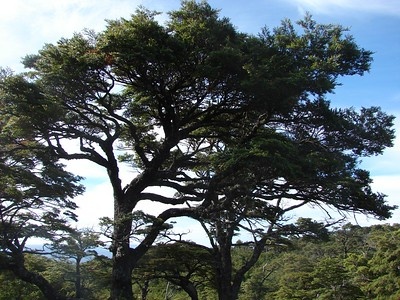Silviculture of South American temperate native forests
January 2022

Image by Jardín Botánico Nacional
South America has the largest area of temperate forests in the Southern Hemisphere, which grow in diverse site conditions. The aim of this paper is to review the practices of silviculture applied and recommended for these temperate forests, and to discuss prospects to develop new silvicultural proposals to improve sustainability, adaptation and in-situ conservation of forest ecosystems.
In Chile, both Nothofagus-dominated and Angiosperm-dominated evergreen forests are diverse in tree species, and mixed-species silviculture with commercially valuable species of variable shade tolerance is most promising. Some secondary forests can reach growth rates as high as 20 m3ha-1yr-1. After thinnings, stands with 35–60% of residual densities have shown the best responses in growth. Even-aged silvicultural methods have shown a rapid reorganization and development of new cohorts, although, where Chusquea species are conspicuous, regeneration establishment requires controlling competing vegetation. Preliminary results also show interesting prospects for single-tree selection cuts in uneven-aged forests. East of the Andes, in Argentina, mixed Nothofagus forests and pure and mixed Nothofagus and A. chilensis forests occur. The shelterwood method has been the most practised and successful in the mixed Nothofagus forests, with abundant regeneration, and good growth rates. For A. chilensis forests, an adaptive management approach is proposed, conditioned by the cypress disease attack (e.g., Phytophthora austrocedri). Conversion of pure A. chilensis to mixed A. chilensis–N. dombeyi forests could increase growth considerably. Finally, in the cool temperate Nothofagus forests and Magellanic rainforests, shared by Chile and Argentina, the regular shelterwood cuts have been the most common silvicultural method, with massive regeneration a decade after the regeneration felling. Since the two major Nothofagus species in these forests regenerate well in gaps, uneven-aged silviculture seems also promising.